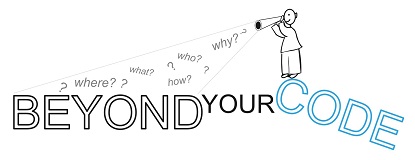Well, before you misinterpret the subject line, it is not about whether to speak English or Hindi J. It is about the format of our communication in implementing the user requirements.
Let me try to illustrate this with an example from my own experience.
A few years back, I was part of a project in Banking domain. The solution that we were implementing dealt with different departments of a major bank (like Call Center, Core Banking & Credit Card department etc). I don’t know how many levels of communication and the information transition was happening from the stage customer providing his requirements to the stage the requirements were ending as Java code, but at the level of module leaders and individual developers, we used to communicate in a language like this:
ü There are n number of screens in the front-end modulerepresenting different ypes of end-user requests.
ü The X screen on the Call Center module will have so and so fields and some particular fields are numeric whereas some are alphanumeric etc. (There were some fields which we didn’t even know what they stand for).
ü Upon hitting the Submit button, the back-end will translate the data in a pre-defined XML format and send it to Core Banking module or Credit Card module. Some of the responses for these requests are synchronous and some of them are asynchronous. (We didn’t know why most of these responses has to be synchronous or asynchronous)
ü …
Well, our team really worked hard and implemented the solution ‘to the requirements that we understood’. The design was good ‘to the requirements that we were given’. The testing was carried out ‘to the technical facts interpreted’ and we evaluated the solution against the ‘technical language’ that we had been speaking thus far.
It was the time for the System Integration Testing (SIT) where we went to the customer site for integrating our solution with the customer’s existing IT infrastructure. Surprisingly, it was not just the integration issues that we dealt there but major portion of them were pure Business Functionality issues that we had not paid any attention to in understanding. We didn’t understand them right and we didn’t speak them right when we implemented our solution. At the customer site, we were working along with a couple of IT engineers and Business Analysts. The business analysts cared the least about our Java or XML or how many modules that our solution was made up of. They were worried about the provision to have different business requests processed in the system (for them each input form on your front-end was a business case and was a real-world scenario) and when the processing was not successful, they had to be informed through the system with proper user-readable messages/alerts. Business SLAs, if any, were to be considered too. These are just a few examples to highlight what we had missed in our implementation.
Seriously, that SIT phase was the time we worked closely with the customer and understood most of the requirements – the real business requirements this time around; we also understood what our Java Exceptions mean to their business and what do with different Exceptions and also started speaking the customer’s language. We had to rewrite good part of business functionality but end of the day, as an individual, I learnt the hard lesson forever, that is “speak customer language” before you speak “technical language”. Had we done it in the beginning itself, we would have saved a lot of time altogether.
Remember that every customer would love to speak to more of their business terminology than your technical terminology. For example, ‘Call Center department will send x request to the Core Banking department’ would sound better to them than ‘Call Center module will send x message to the Core Banking module’.
-------------------------------------------------------------------------------------------------------------------------------------
Has your team understood the business problem well before you jump start with design and code? If you don’t know the customer’s business already, work with the customer in understanding the same. Openness is very important here.
Are you asking the right questions to the customer to understand his business? This also helps the customer understand and have a measure of what your team know and what they don’t know and arrange for any training material, if any or take any other appropriate steps to educate your team more.
Is your team discussing the business case scenarios in the design or review meetings OR are they always discussing the technical problems?
Are your incremental deliveries being evaluated by the right team from the customer side?
Does your team know who the end users of the solution would be and adding the "customer perspective" in the construction phase?
-------------------------------------------------------------------------------------------------------------------------------------
"Software contruction isn't just about solving a set of technical problems but it is about solving business problems through technology"
(Attribution: Images on this post are downloaded from FreeDigitalPhotos.Net)


No comments:
Post a Comment